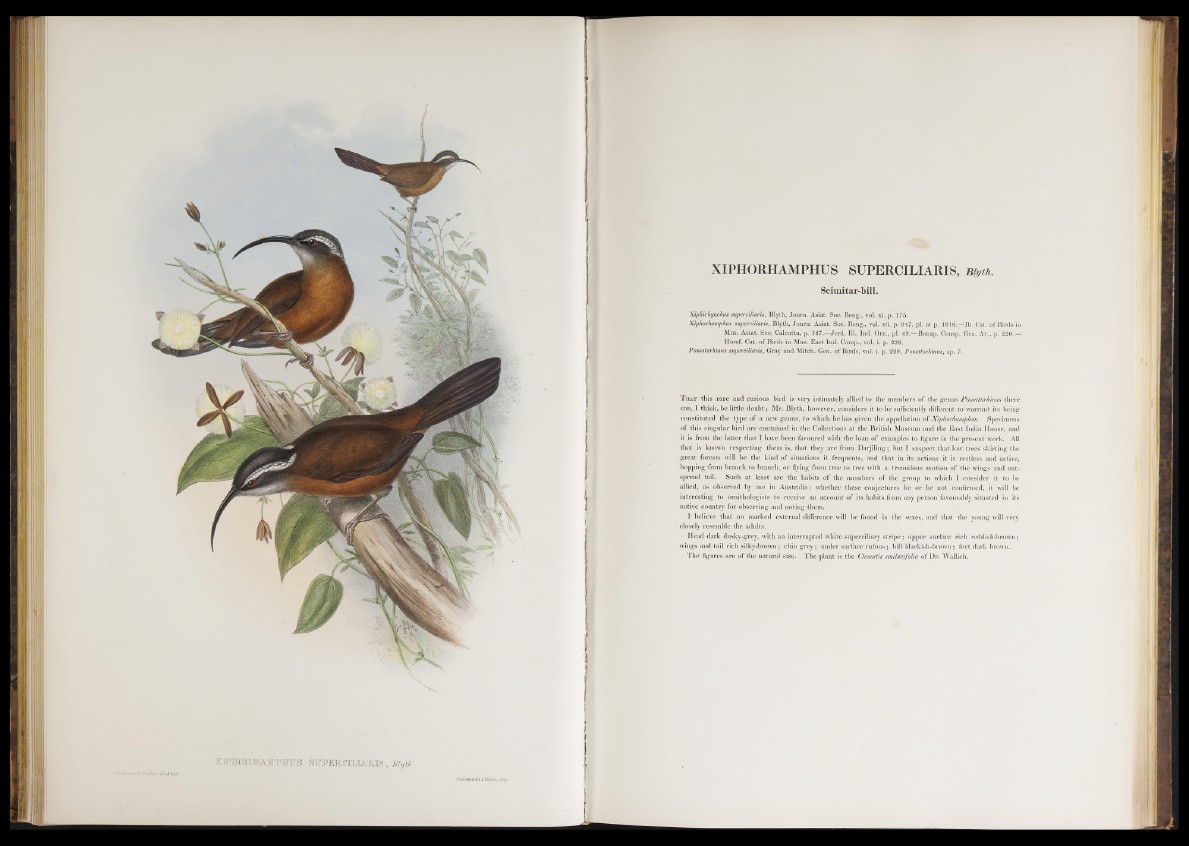
SWUiü7w> H
XIPHORHAMPHUS SUPERCILIARIS, Blyth.
Scimitar-bill.
Xiphirhynchus superciliaris, Blyth, Joum. Asiat. Soc. Beng., vol. xi. p. 175.
Xiphorhamphus super ciliaris, Blyth, Journ. Asiat. Soc. Beng., vol. xii. p. 947. pi. at p. 1010.—Ib. Cat. of Birds in
Mus. Asiat. Soc. Calcutta, p. 147.—Jerd. 111. Ind. Om., pl. 49.—Bonap. Consp. Gen. Av., p. 220. —
Horsf. Cat. o f Birds in Mus. East Ind. Comp., vol. i. p. 238.
Pomatorhinus superciliaris, Gray and Mitch. Gen. o f Birds, vol. i. p. 229, Pomatdrhinus, sp. 7.
T h a t this rare and curious bird is very intimately allied to the members of the genus Pomatorhinus there
can, I think, be little d oubt; Mr. Blyth, however, considers it to be sufficiently different to warrant its being
constituted the type o f a new genus, to which he has given the appellation of Xiphorhamphus. Specimens
o f this singular bird are contained in the Collections at the British Museum and the East India House, and
it is from the latter th at I have been favoured with the loan of examples to figure in the present work. All
that is known respecting them is, that they are from Darjiling; but I suspect that low trees skirting the
great forests will be the kind o f situations it frequents, and that in its actions it is restless and active,
hopping from branch to branch, or flying from tree to tree with a tremulous motion of the wings and outspread
tail. Such at least are the habits o f the members o f the group to which I consider it to be
allied, as observed by me in Australia: whether these conjectures be or be not confirmed, it will be
interesting to ornithologists to receive an account o f its habits from any person favourably situated in its
native country for observing and noting them.
I believe that no marked external difference will be found in the sexes, and that the young will very
closely resemble the adults.
Head dark dusky-grey, with an interrupted white superciliary strip e; upper surface rich reddish-brown;
wings and tail rich silky-brown; chin g rey ; under surface rufous; bill blackish-brown; feet dark brown.
The figures are o f the natural size. The plant is the Clematis smilacifolia of Dr. Wallich.